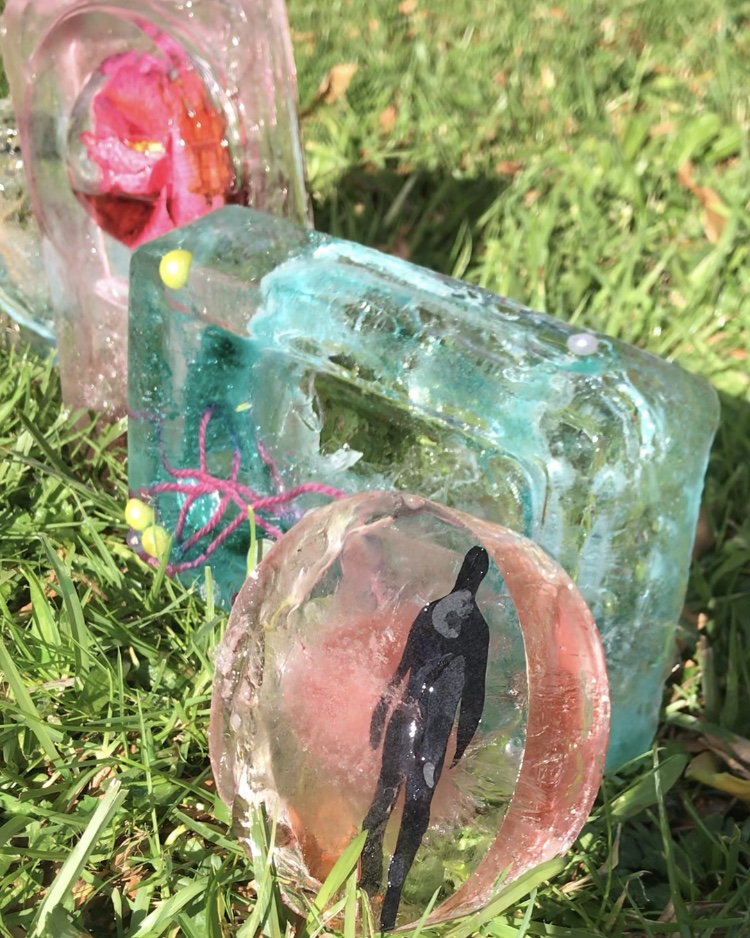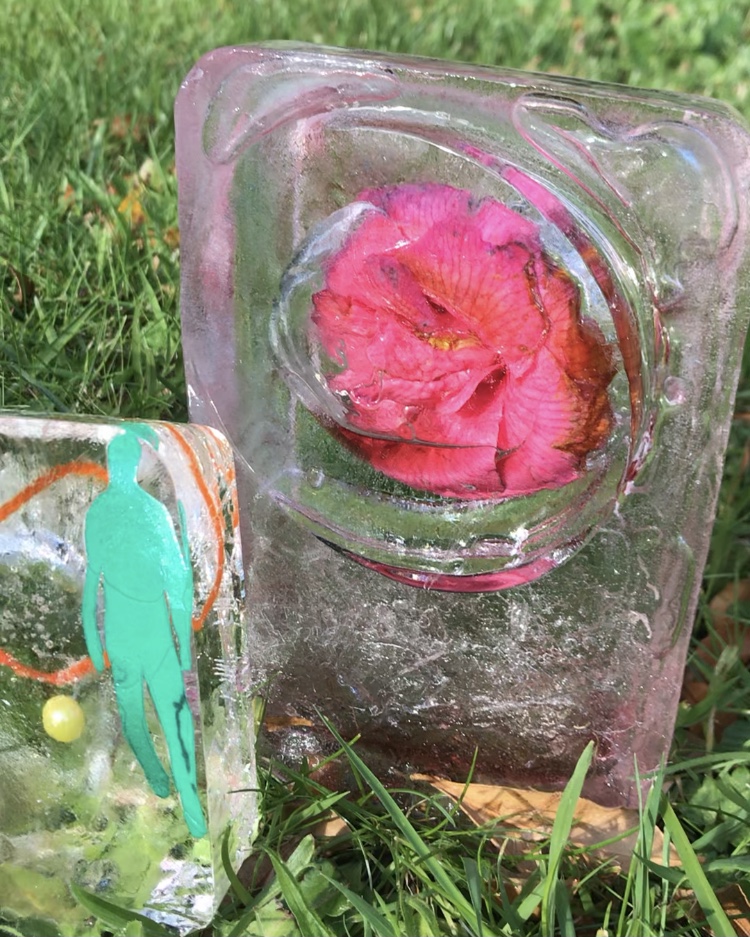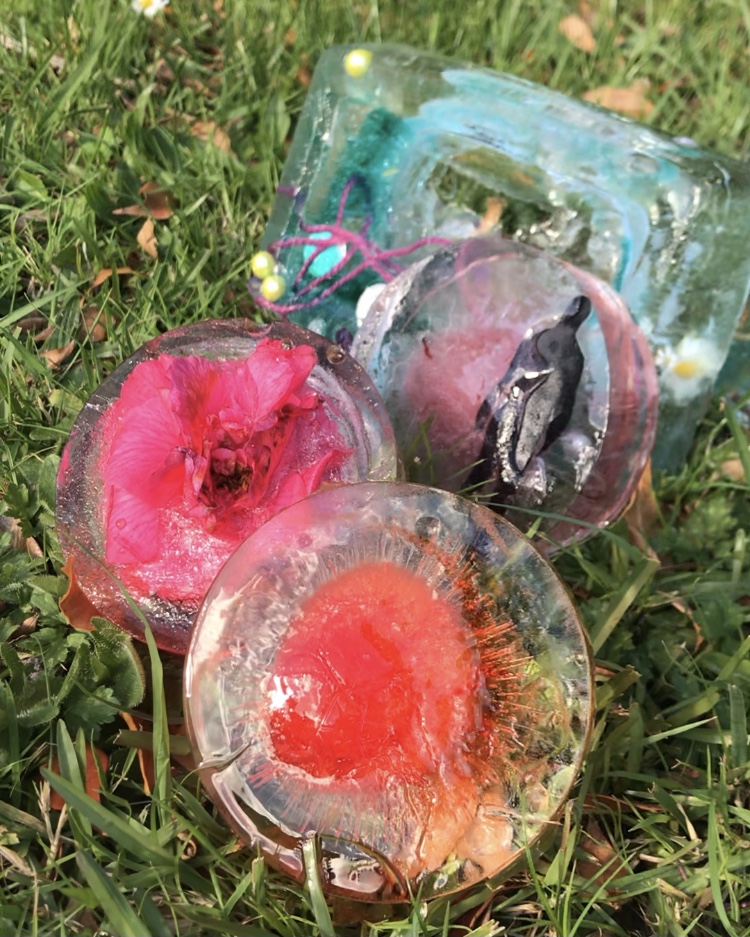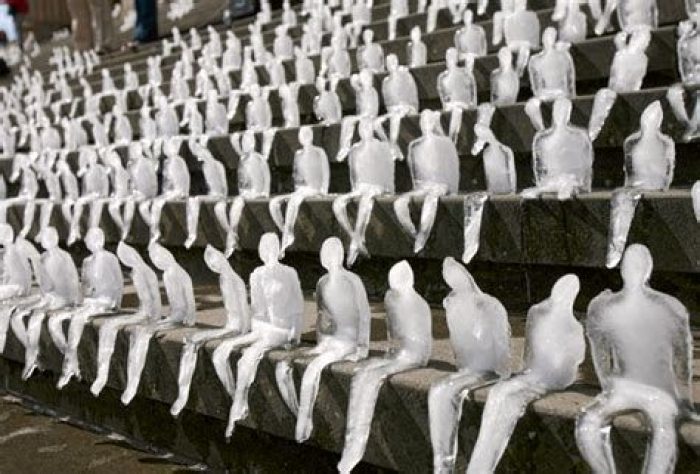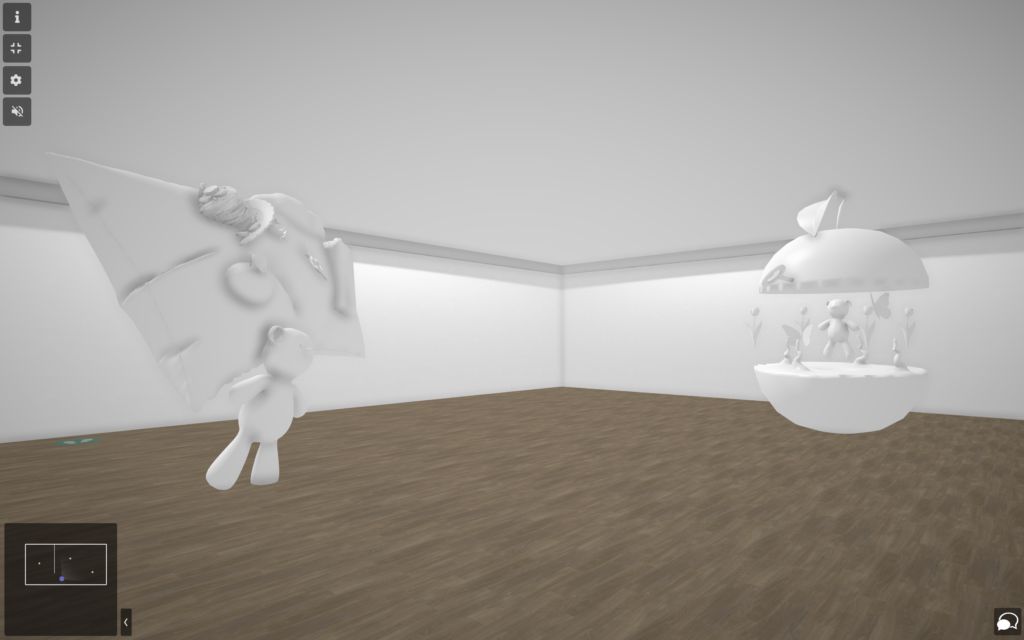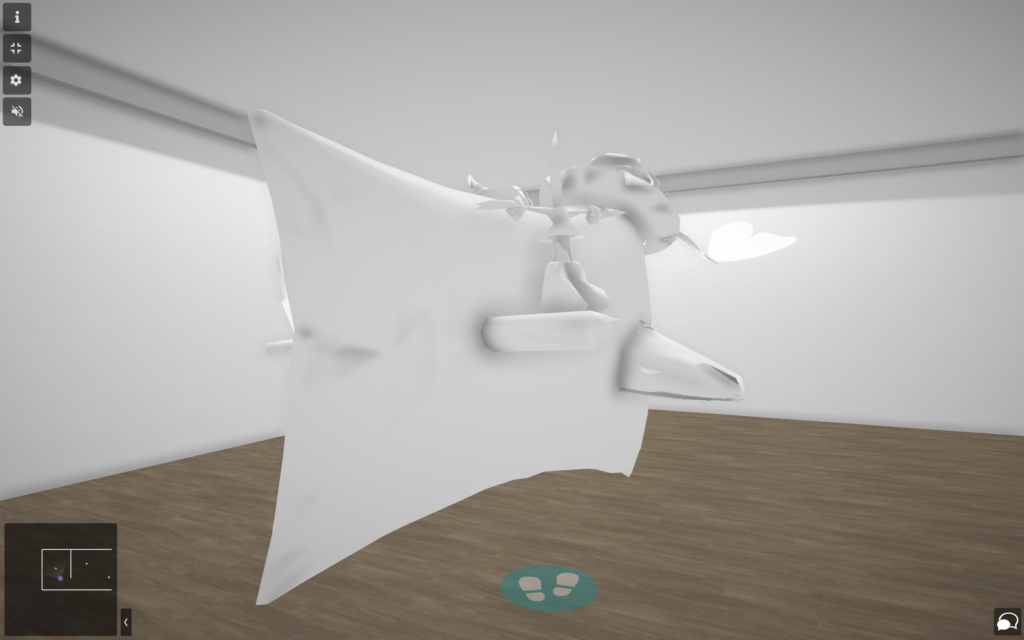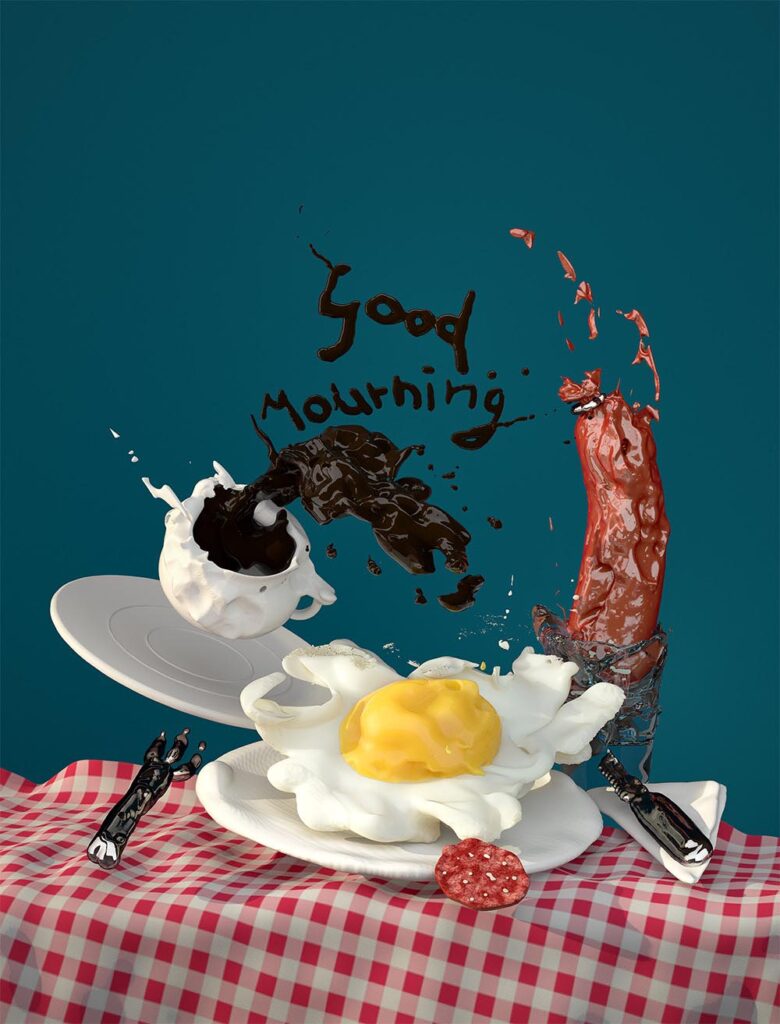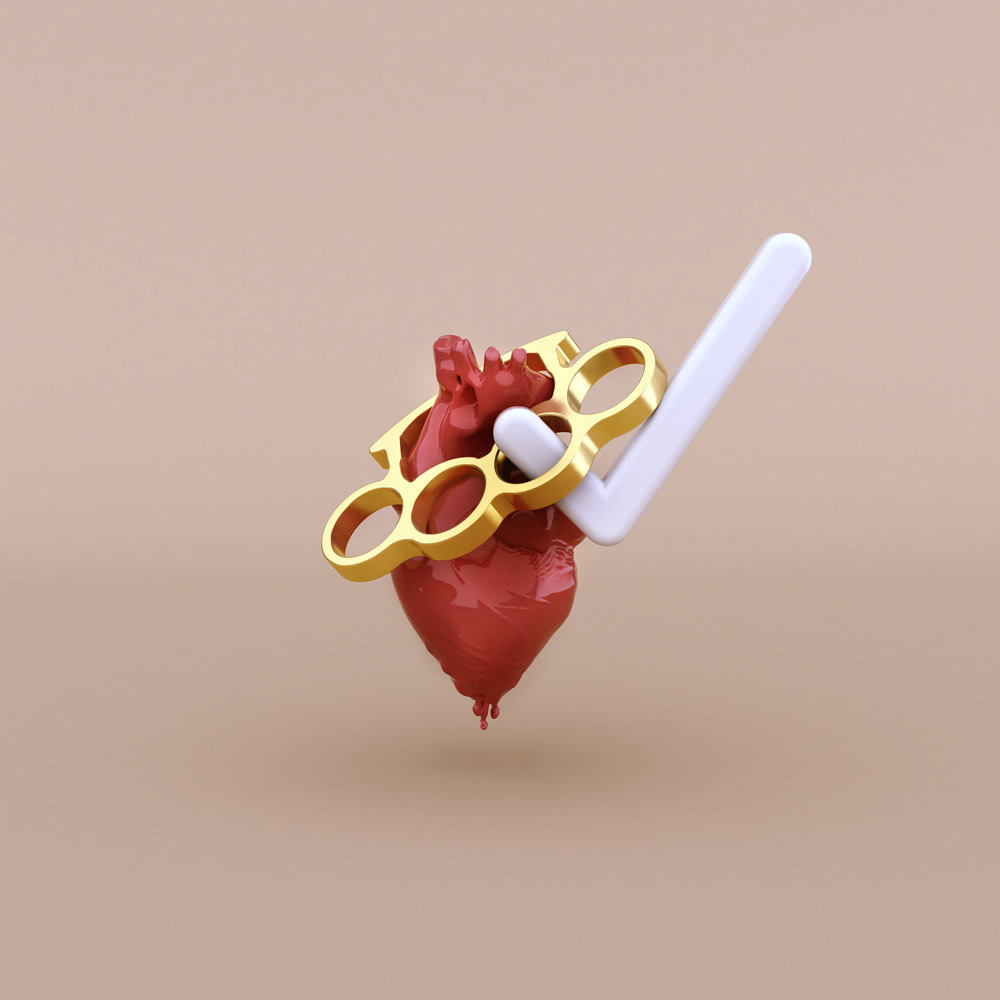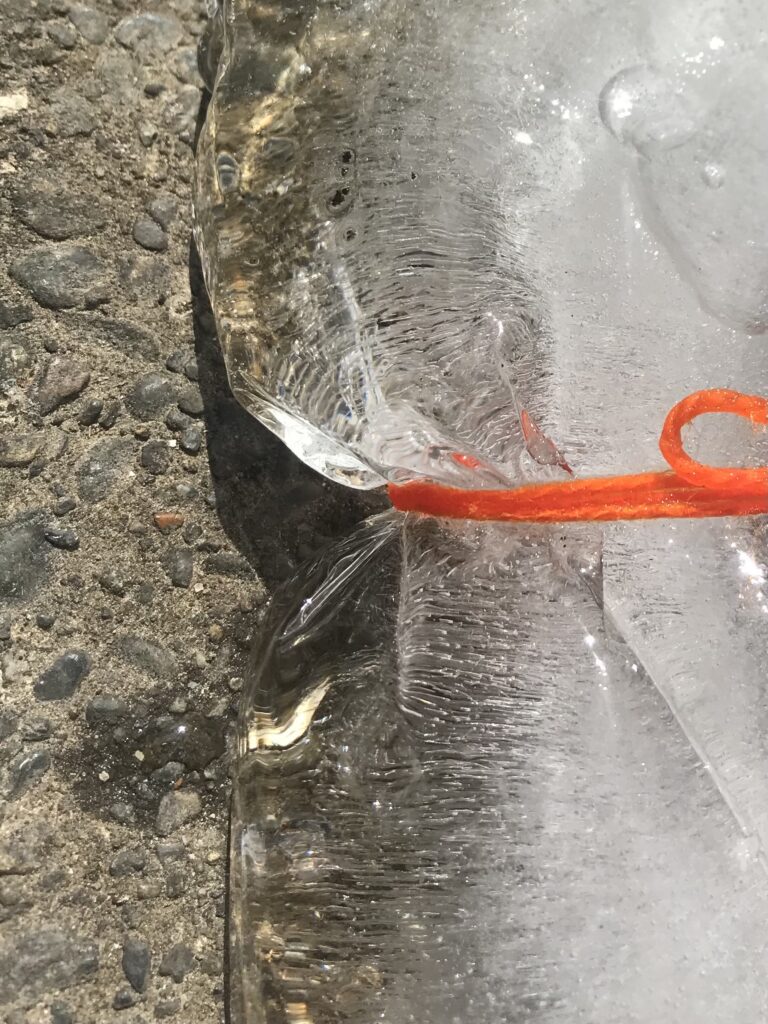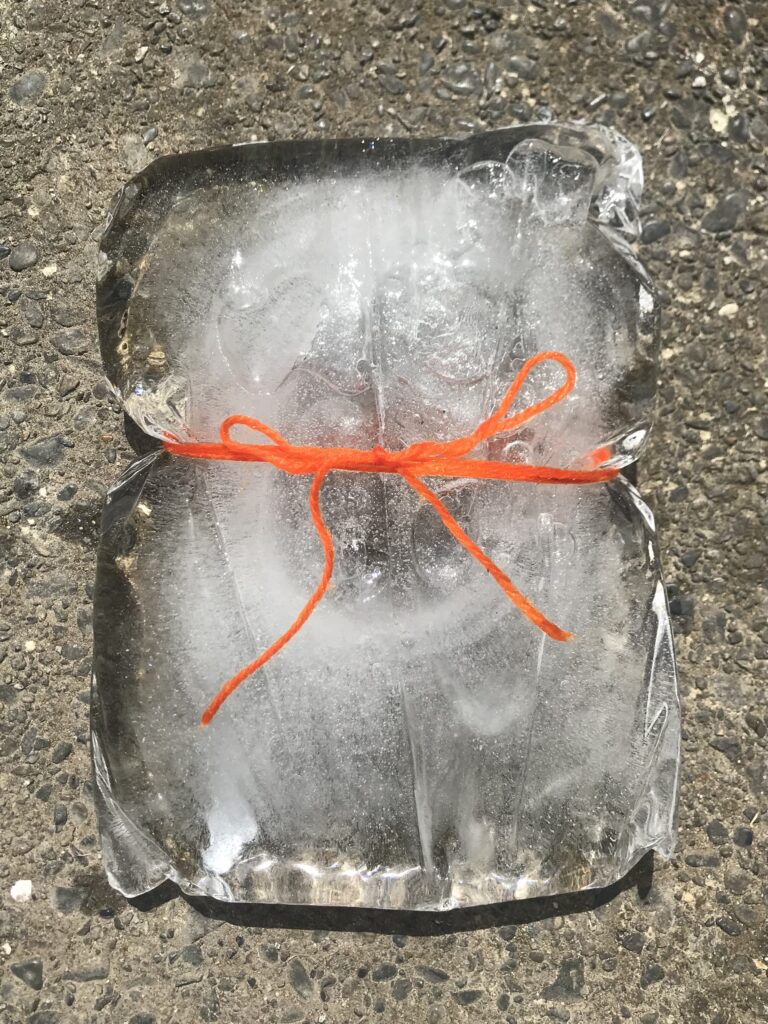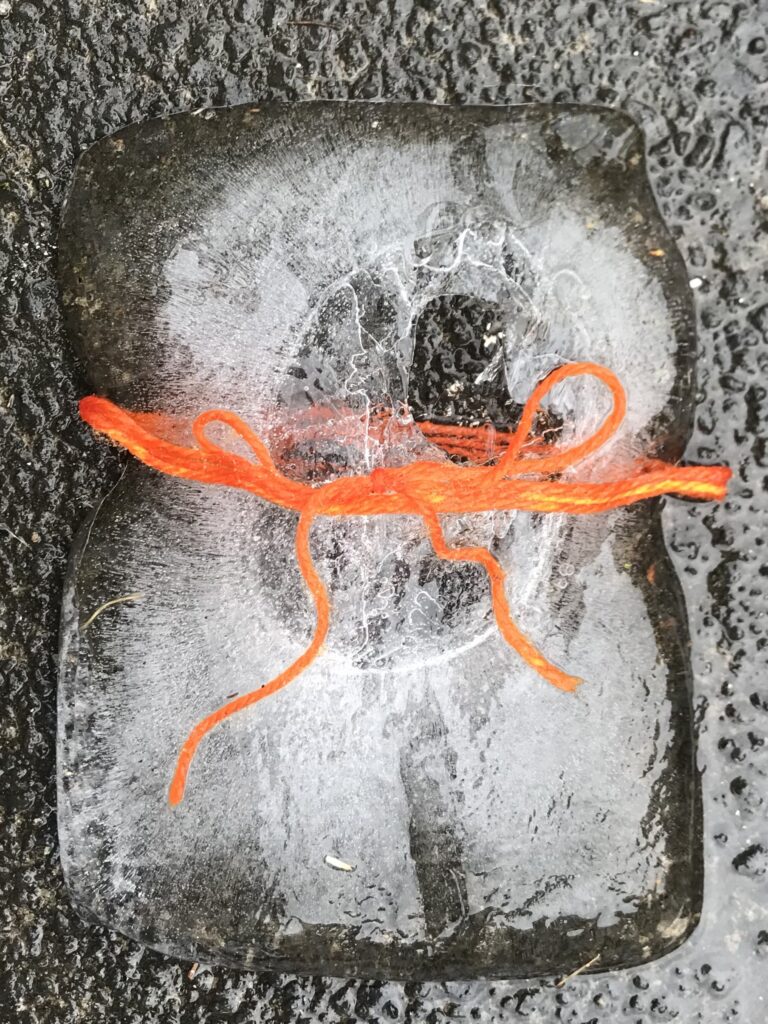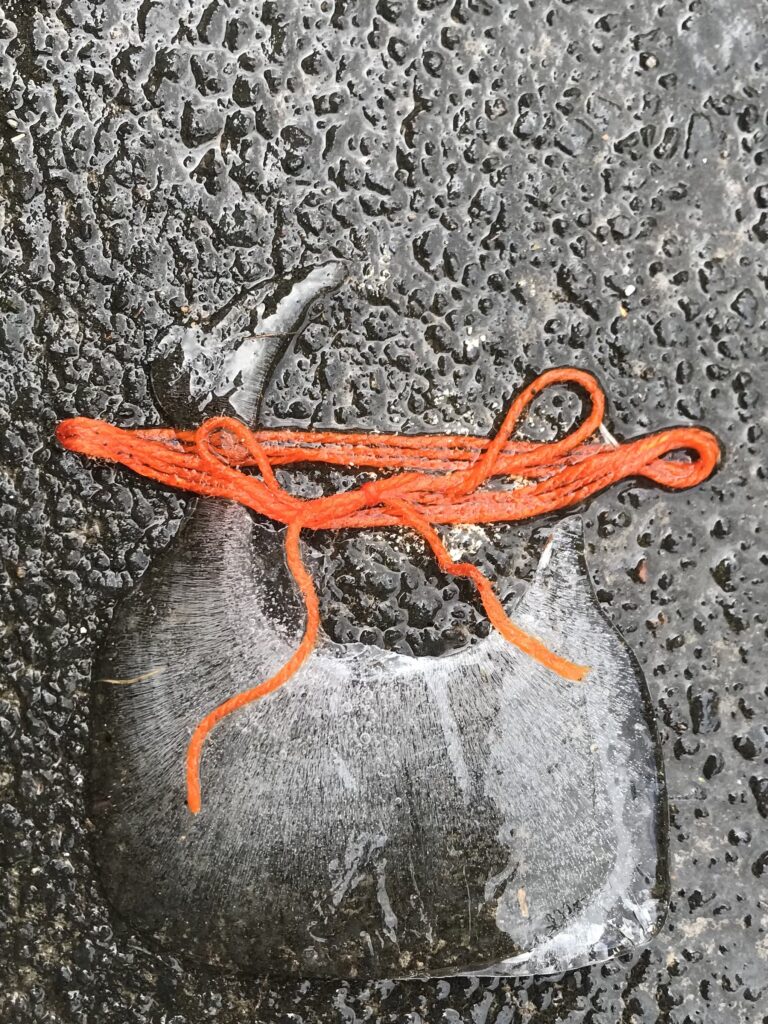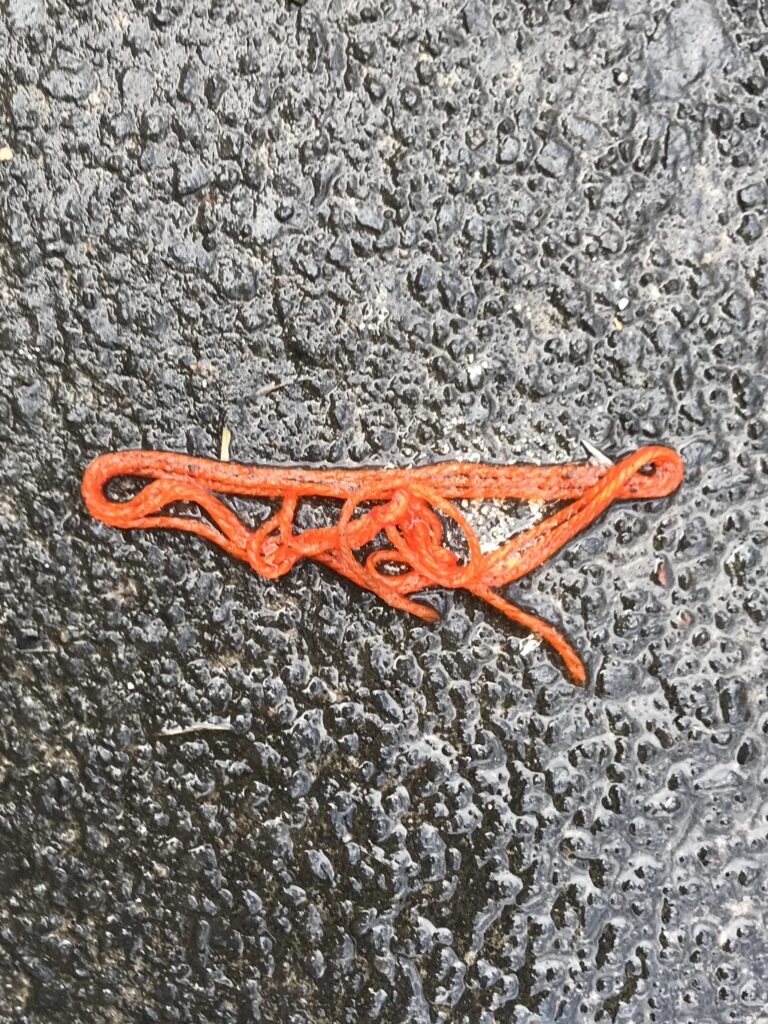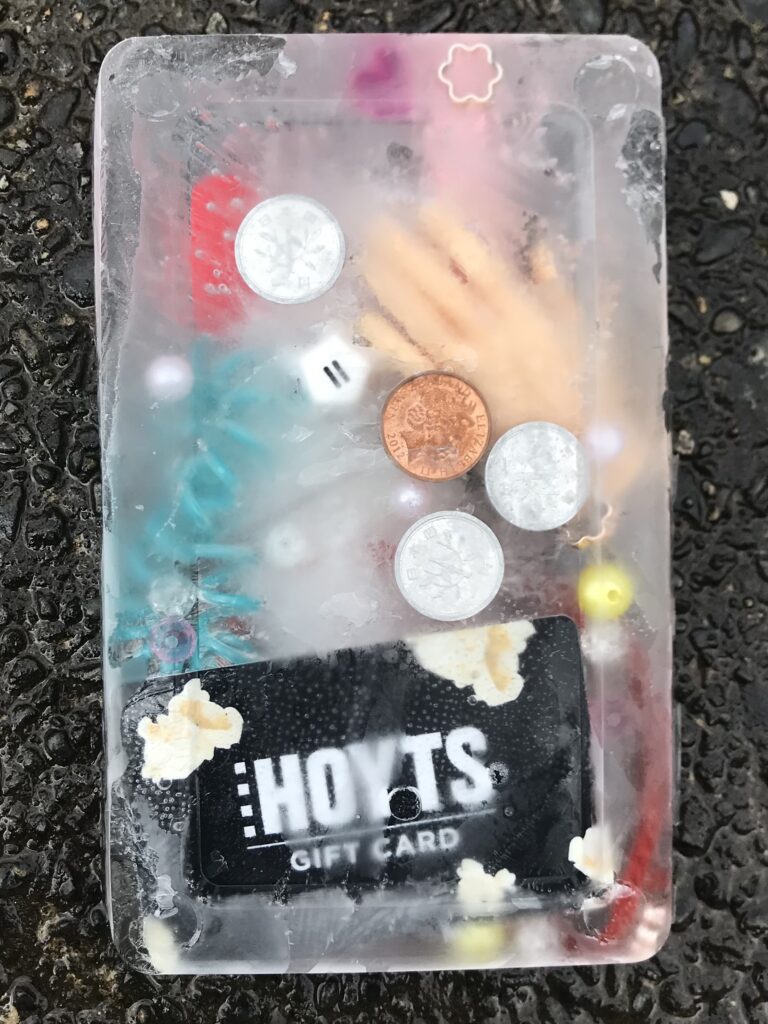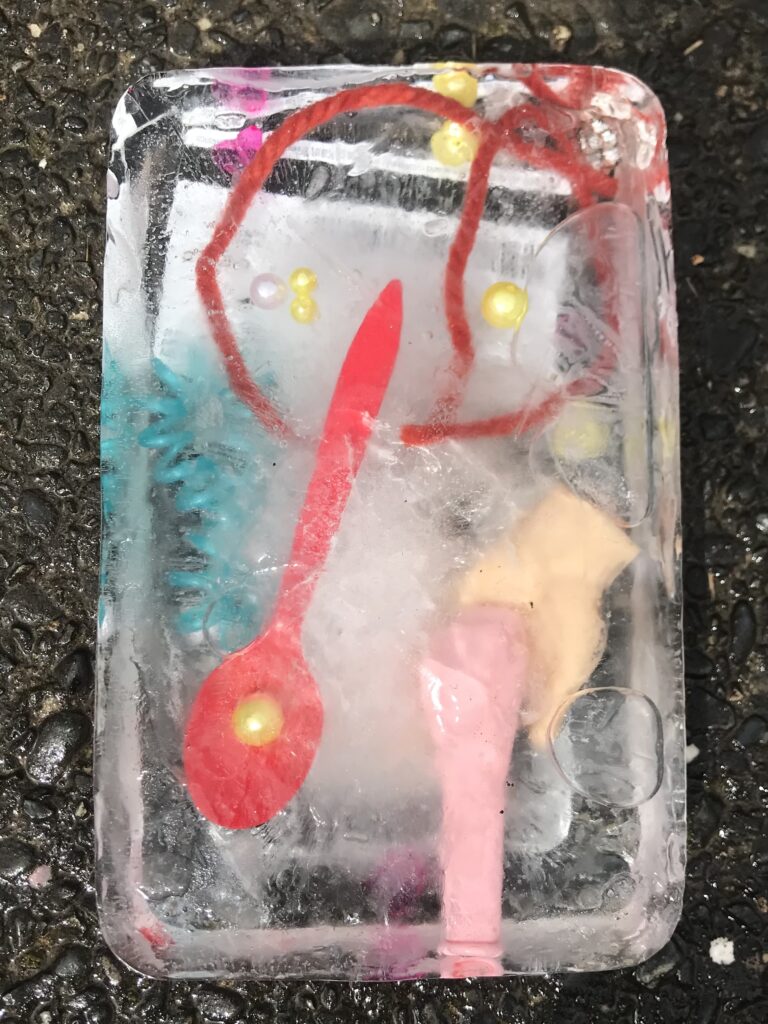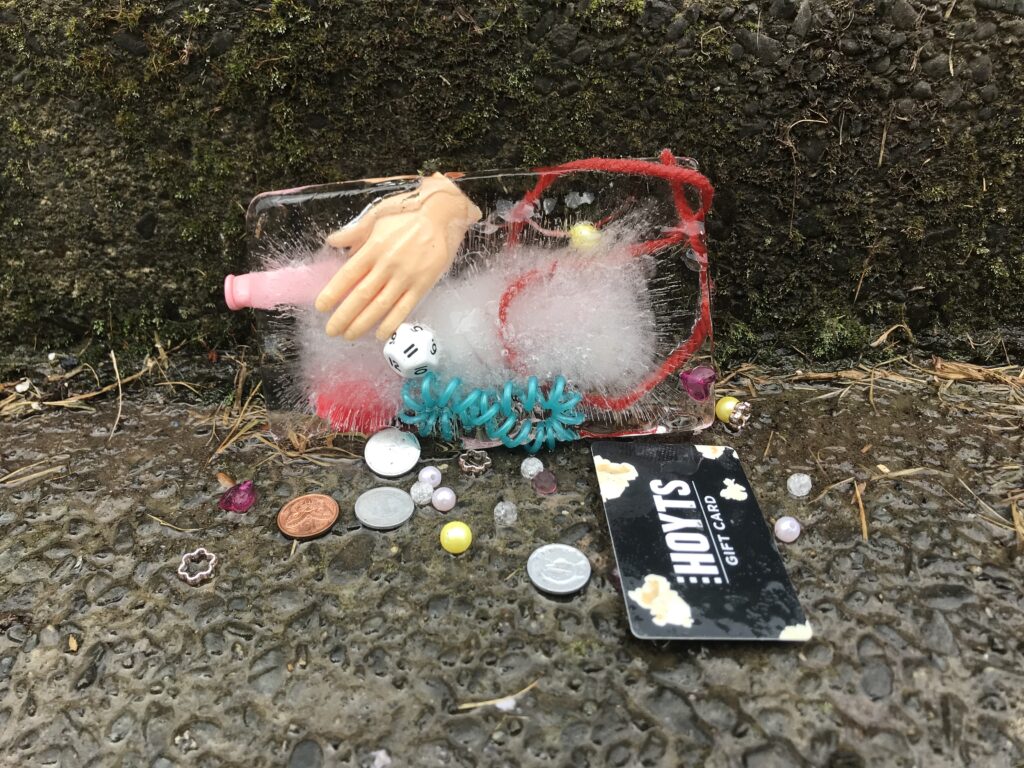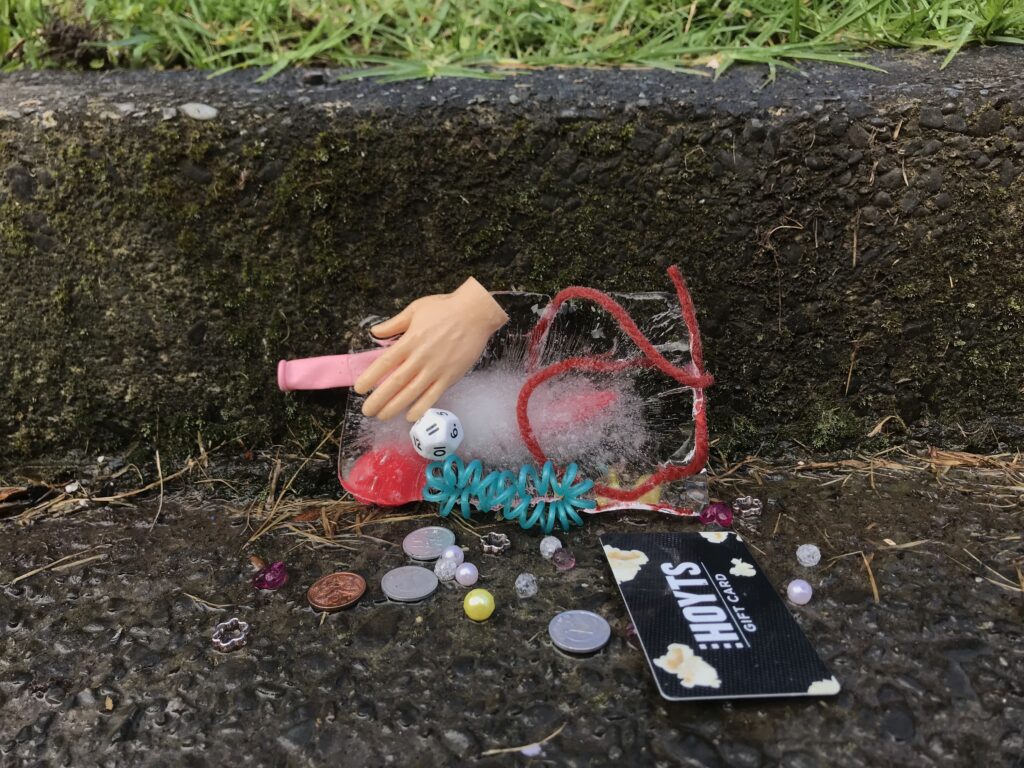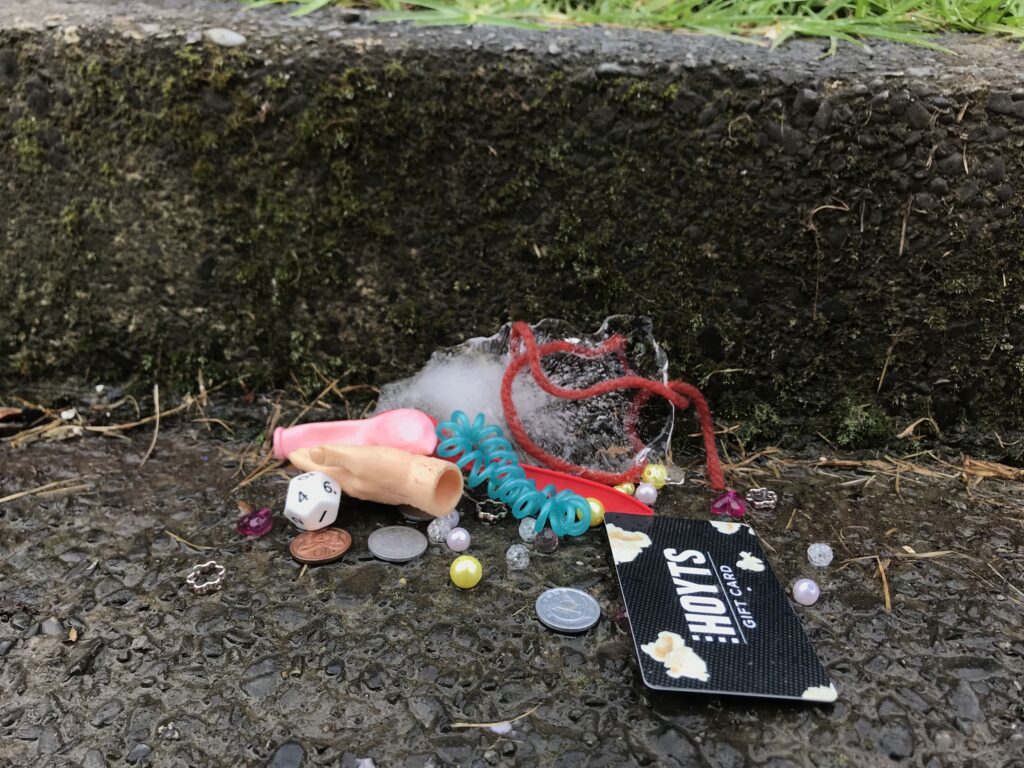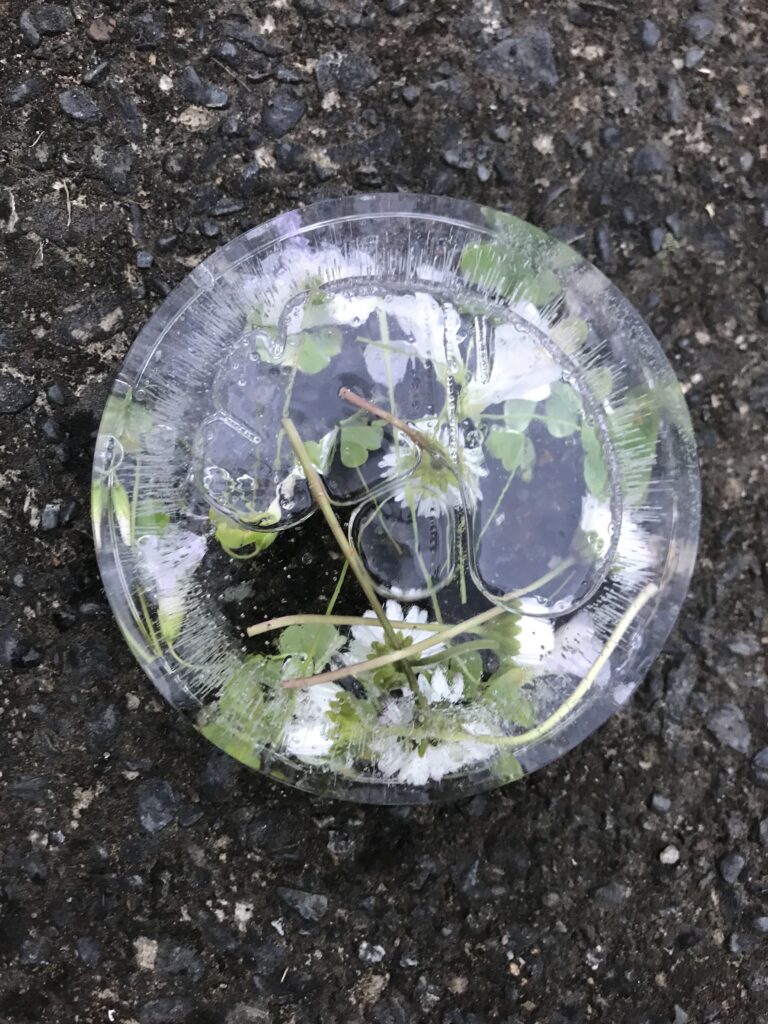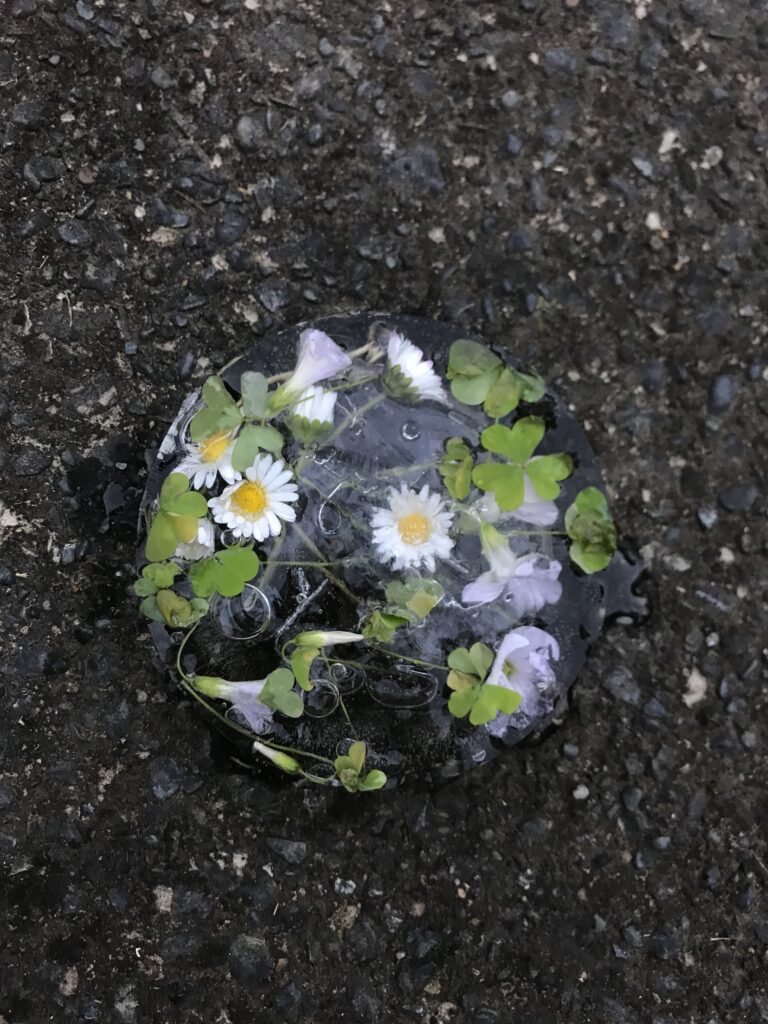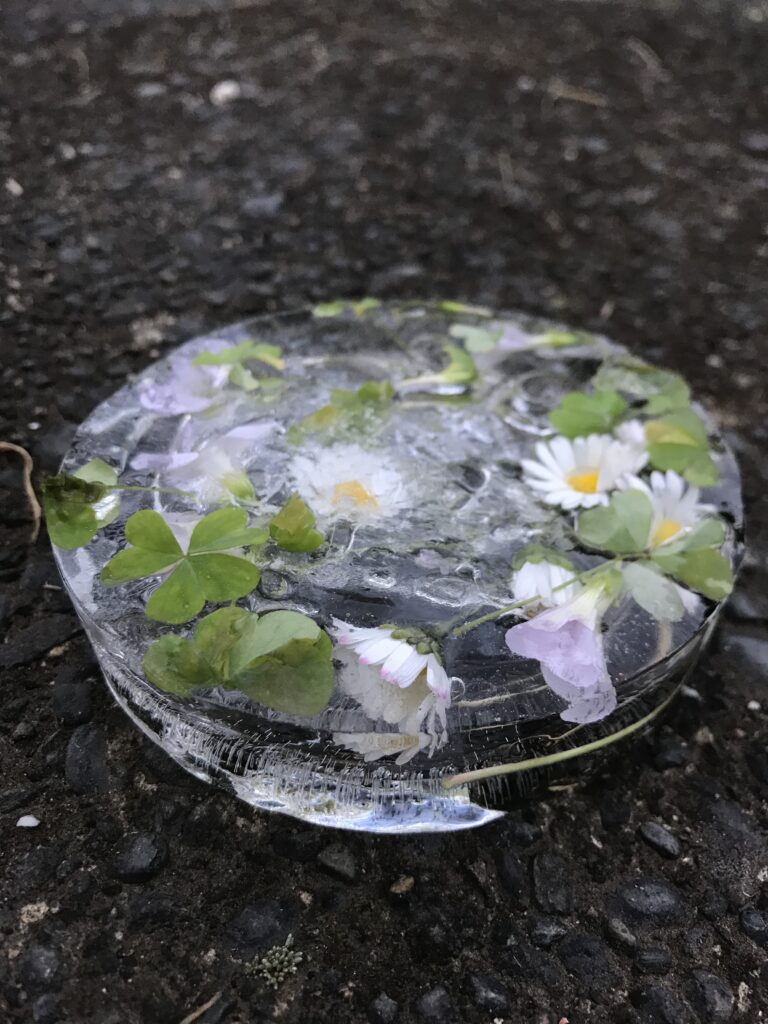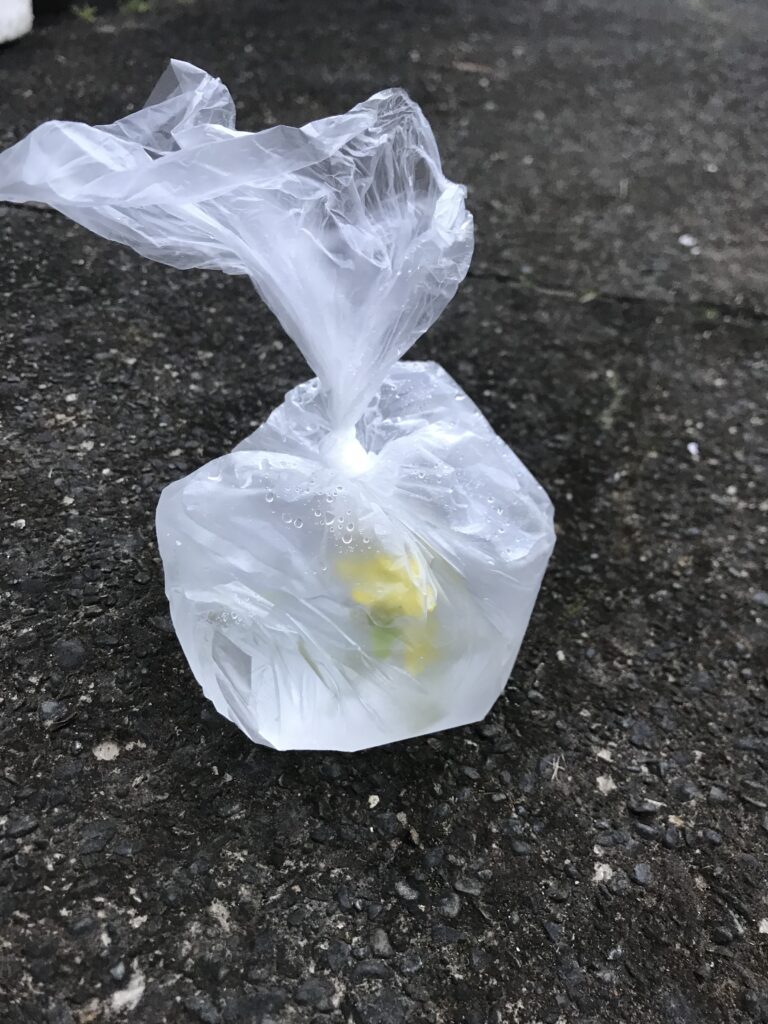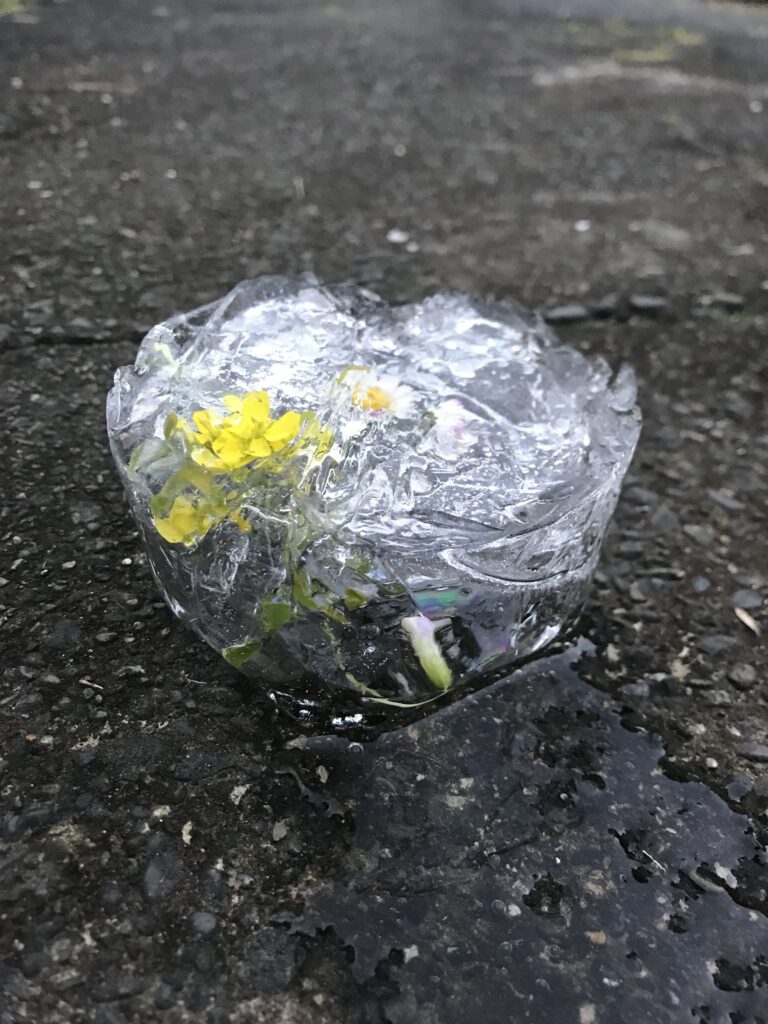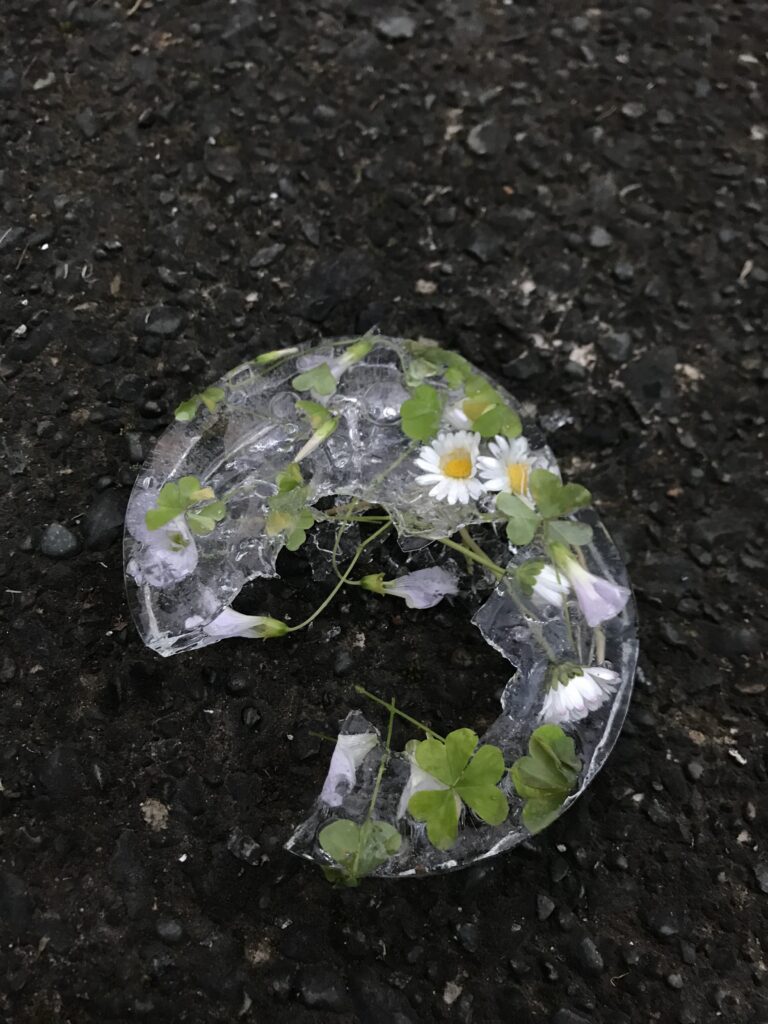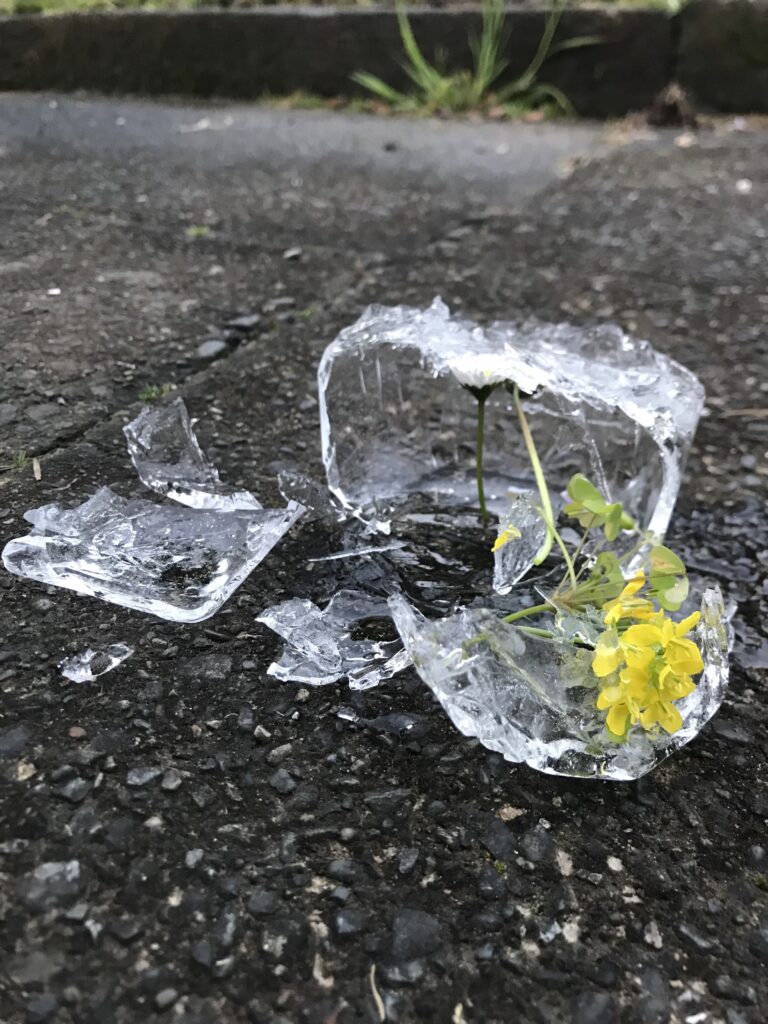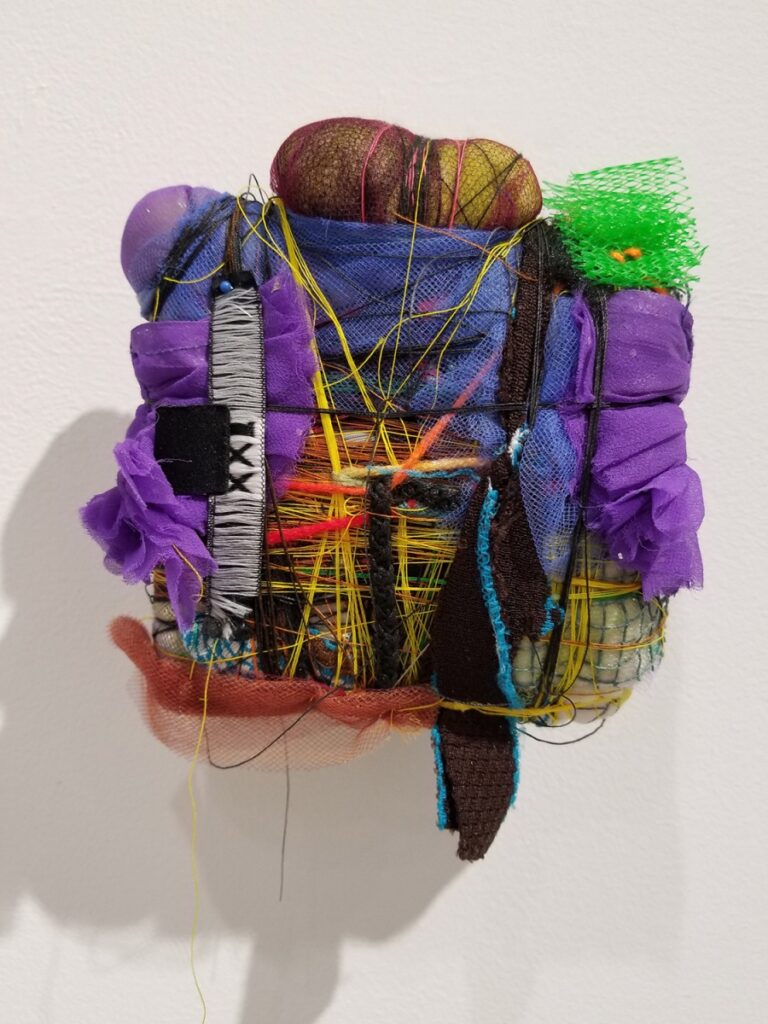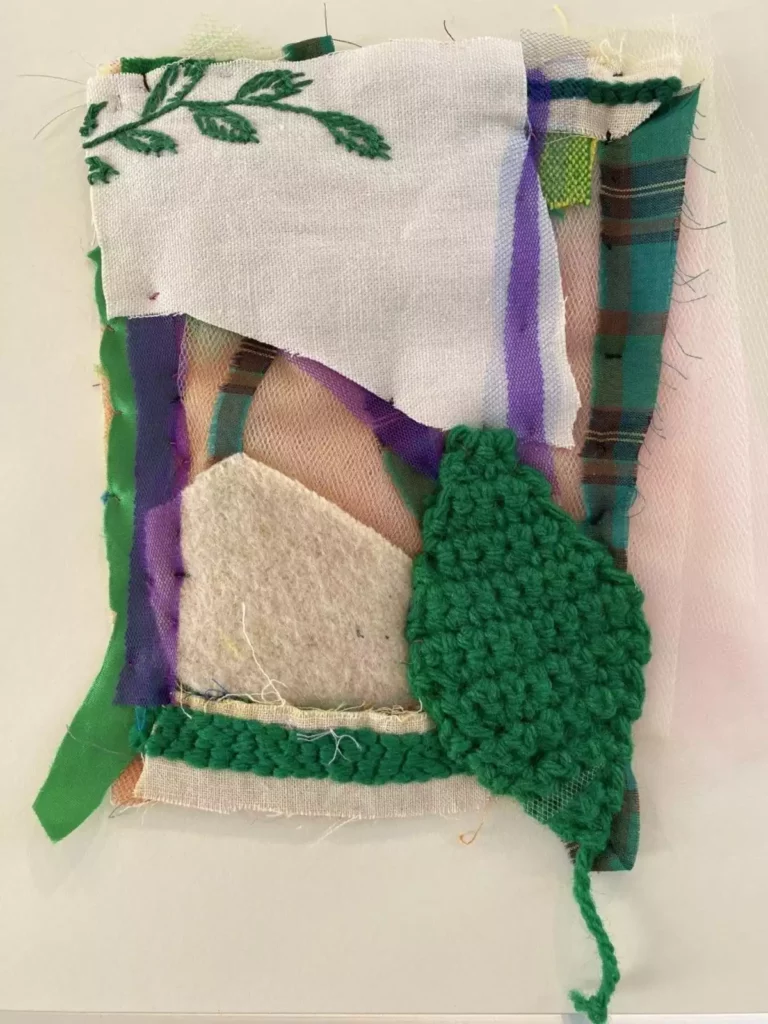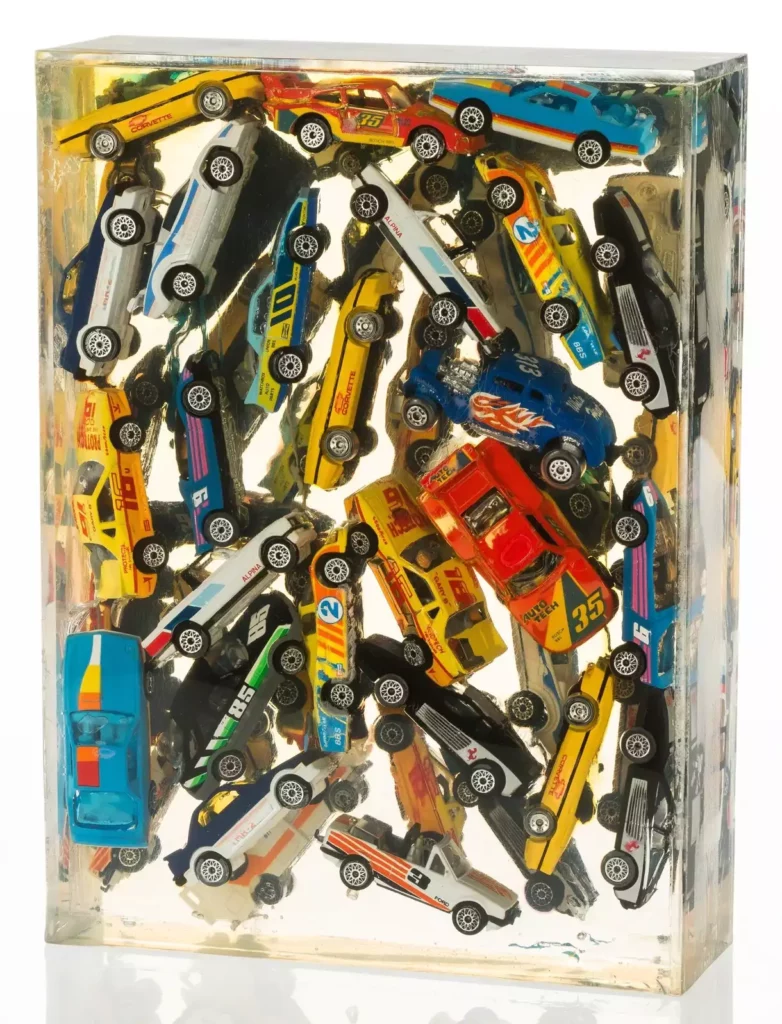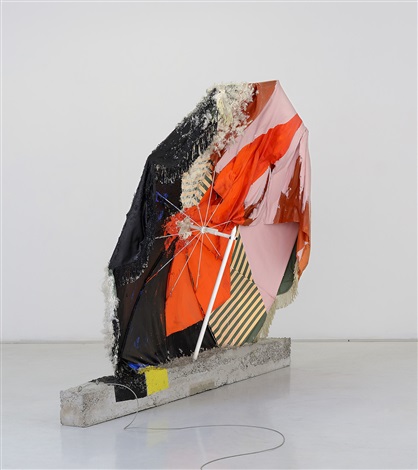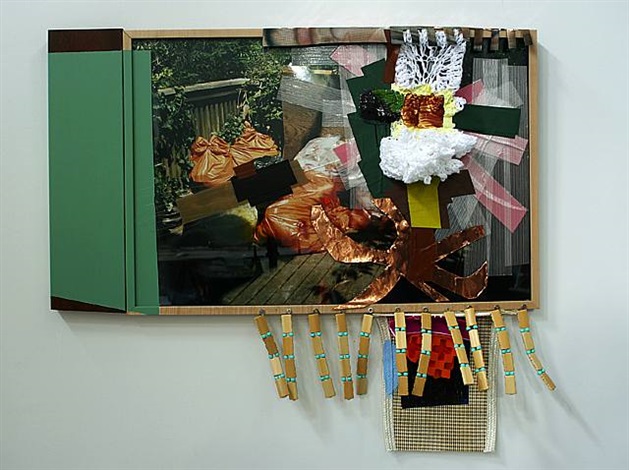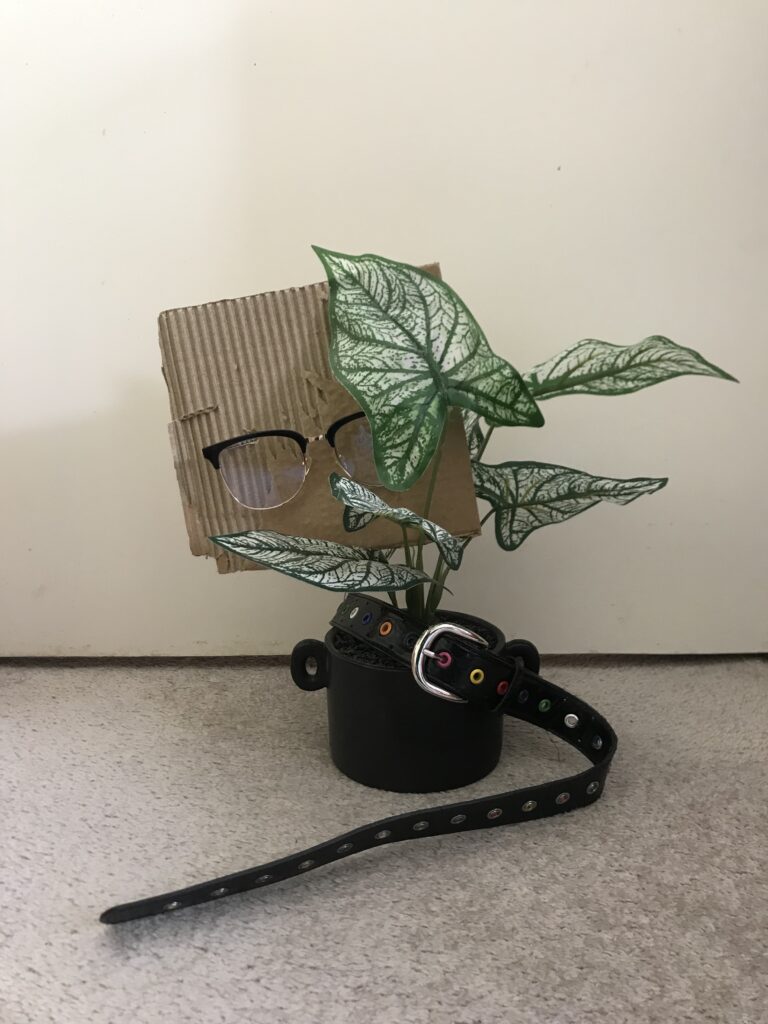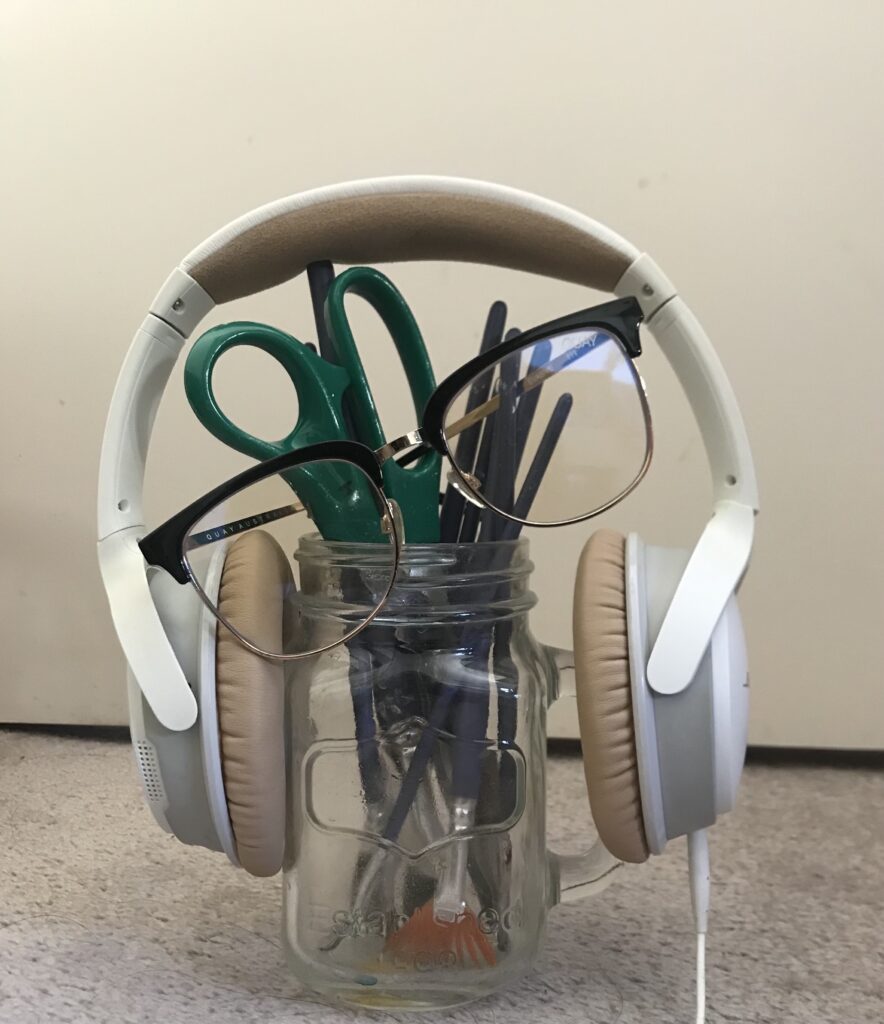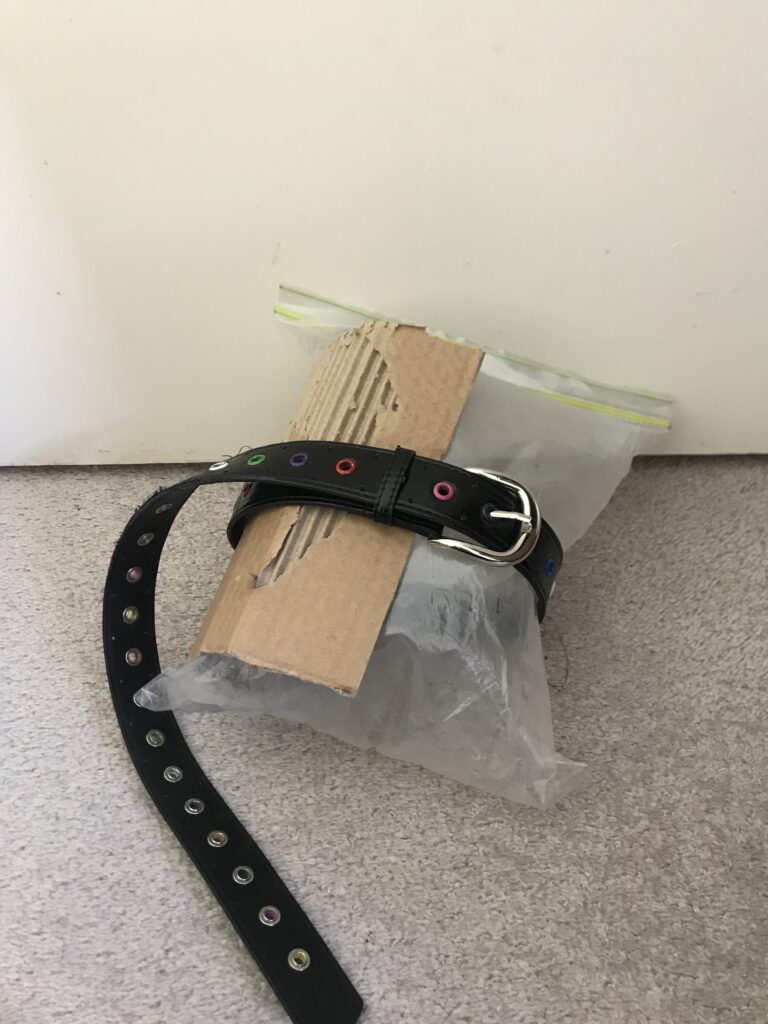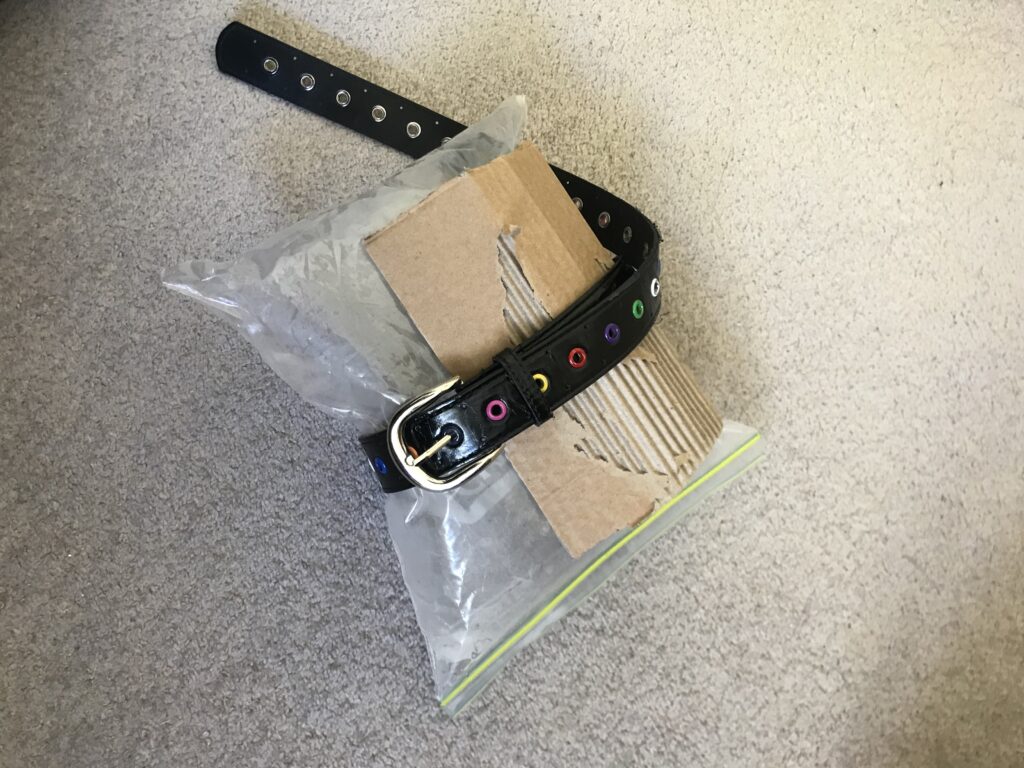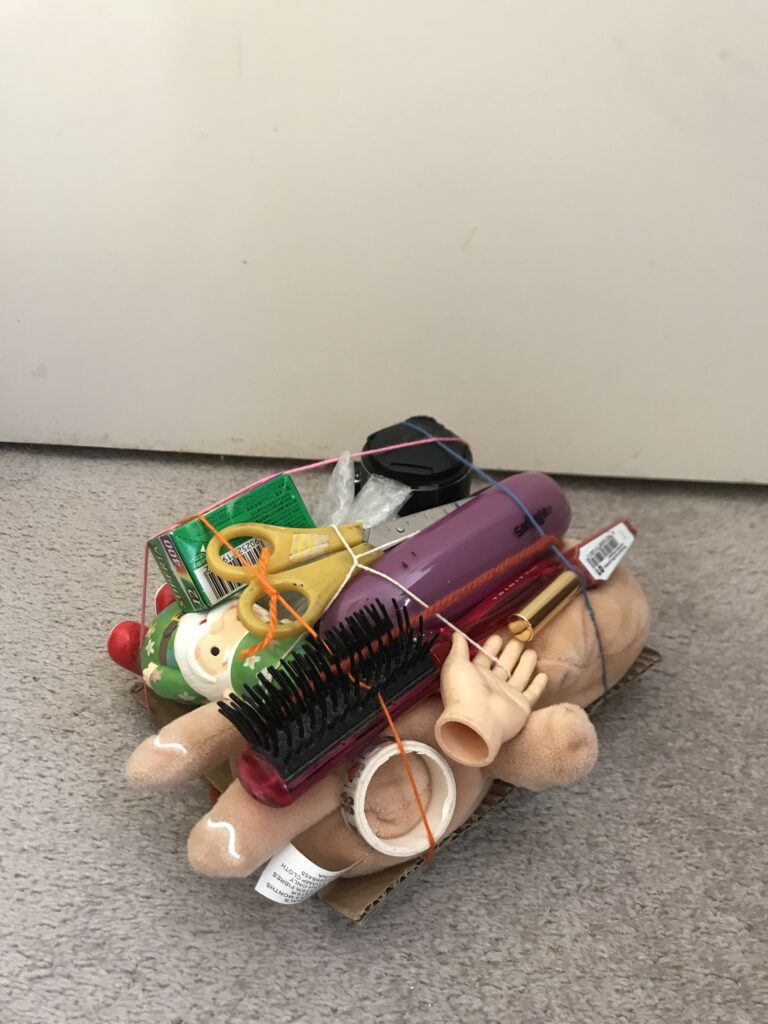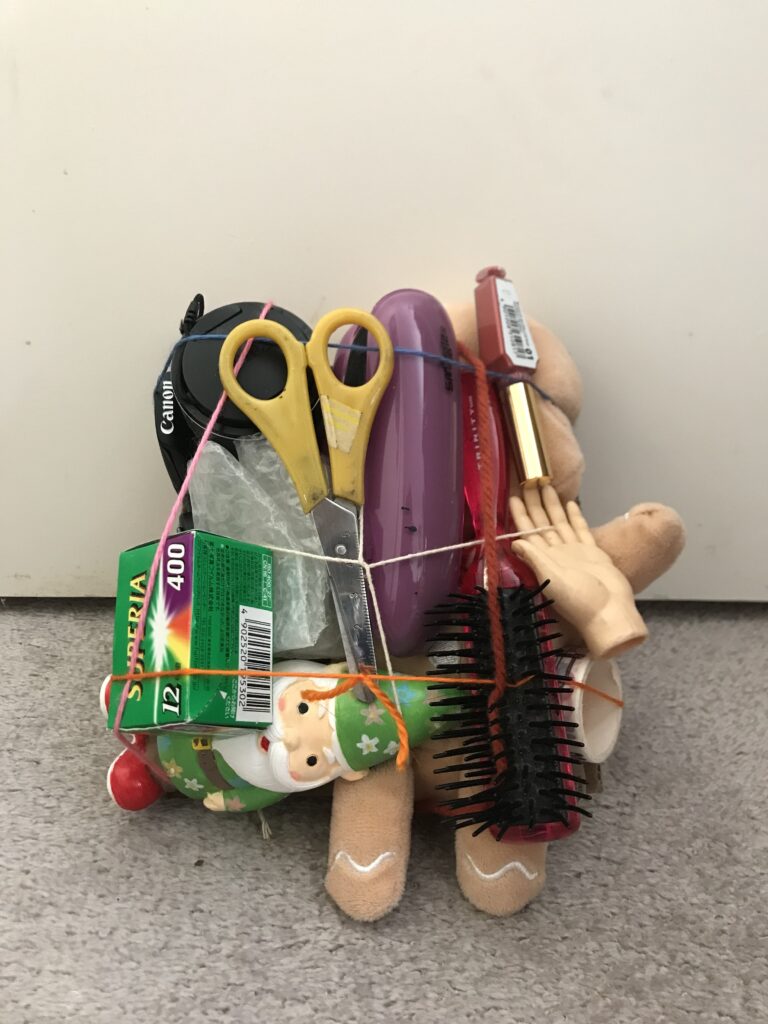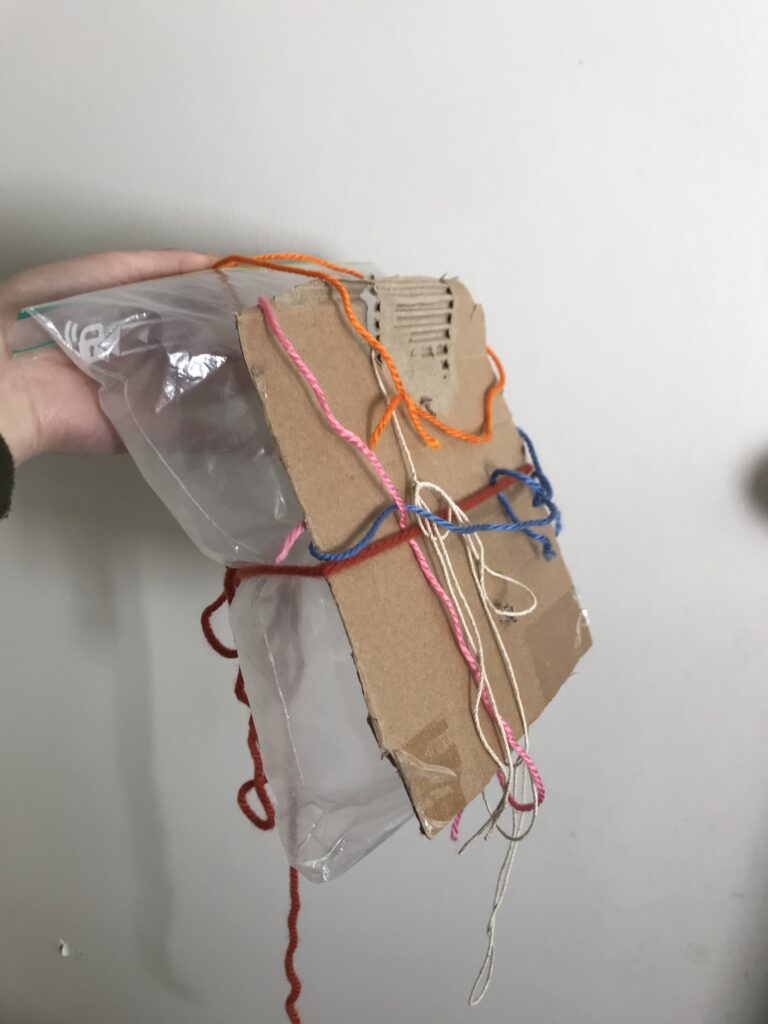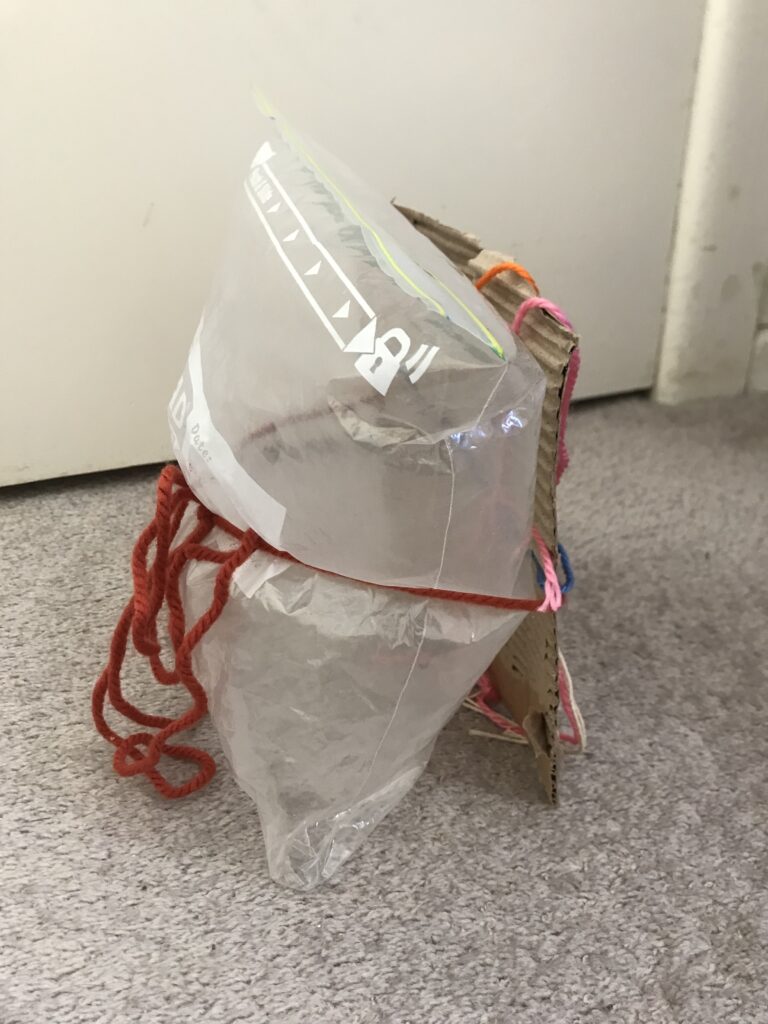I made various ice sculptures, focusing on the question of solidity defining the truthfulness of a sculpture. This links back to the idea of verisimilitude and the things we view to be ‘real’, as some people may believe that ice slowly loses itself as a sculptural object as the state of matter changes. The ice frames the sculpture. However as you watch the timelapse and the photo sequences of the ice melting, do you see the sculpture slowly disappearing?
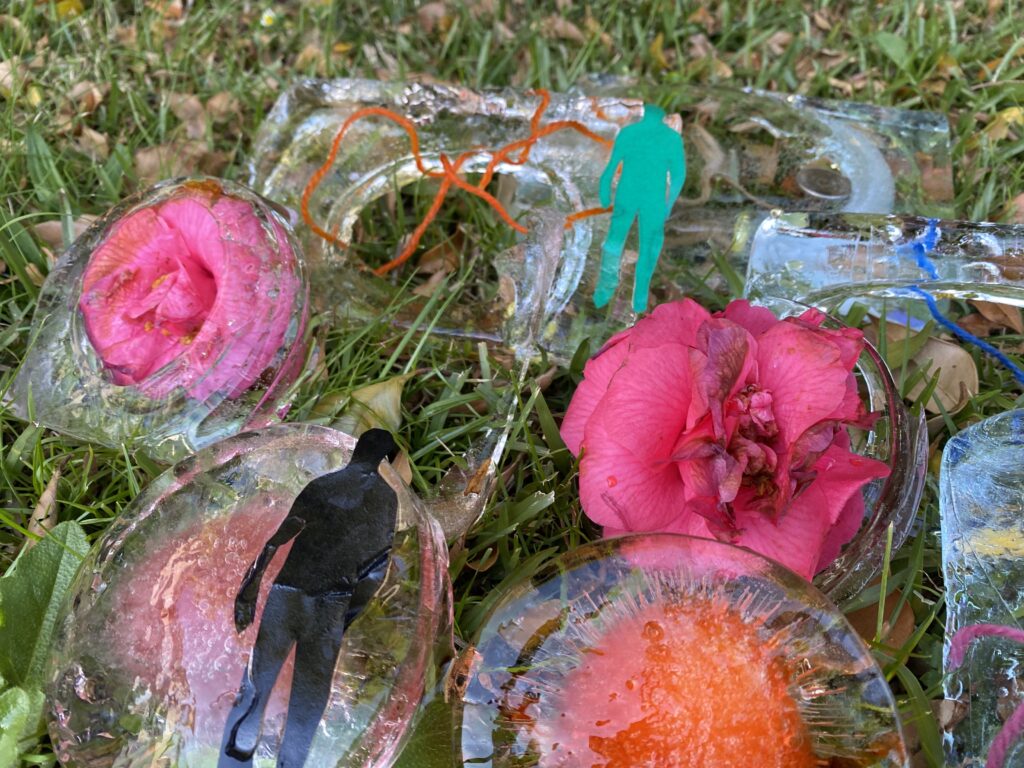
I didn’t use many objects in my ice as I did in my assemblages because I wanted the ice to be the main subject of the sculpture. I put in some beads and coins to create reflections from the sunlight and allow the ice to encapsulate these objects. I also wanted to focus on the aspect of ice as a mode of ‘freezing time’. I cut out some silhouettes of people on coloured paper and placed them in the water before freezing. They look like pedestrians walking, frozen in time. The solidity and the fragility of the paper also create interesting relationships. I also put in some yarn, which I thought was interesting because such a light weight material would move around in the water. However, when it is frozen, it captures the yarn in a moment in time. Using flowers in the ice was also important because flowers decay at a fast pace. However freezing the flower in water can freeze a moment in time, and the bright colour and freshness can live for longer.
I tinted the water before freezing them, so you can see a slight tint to the ice in these close-up photos. What is interesting about this, is that the colour also slowly disappeared as the ice melted. Because I had to wait for my ice to form, I had limited sunlight when I took my ice outside. Although it wasn’t the sunniest day, the ice absorbed and reflected on the ice.
There is a lot of real conversations that arise when working with natural materials. Some may simply think about the states of matter and the way this material works as a sculpture. However, some people may immediately view melting ice as a visual metaphor for our climate crisis. Perhaps it is the deep, important conversations about global issues is that makes a sculpture more real.
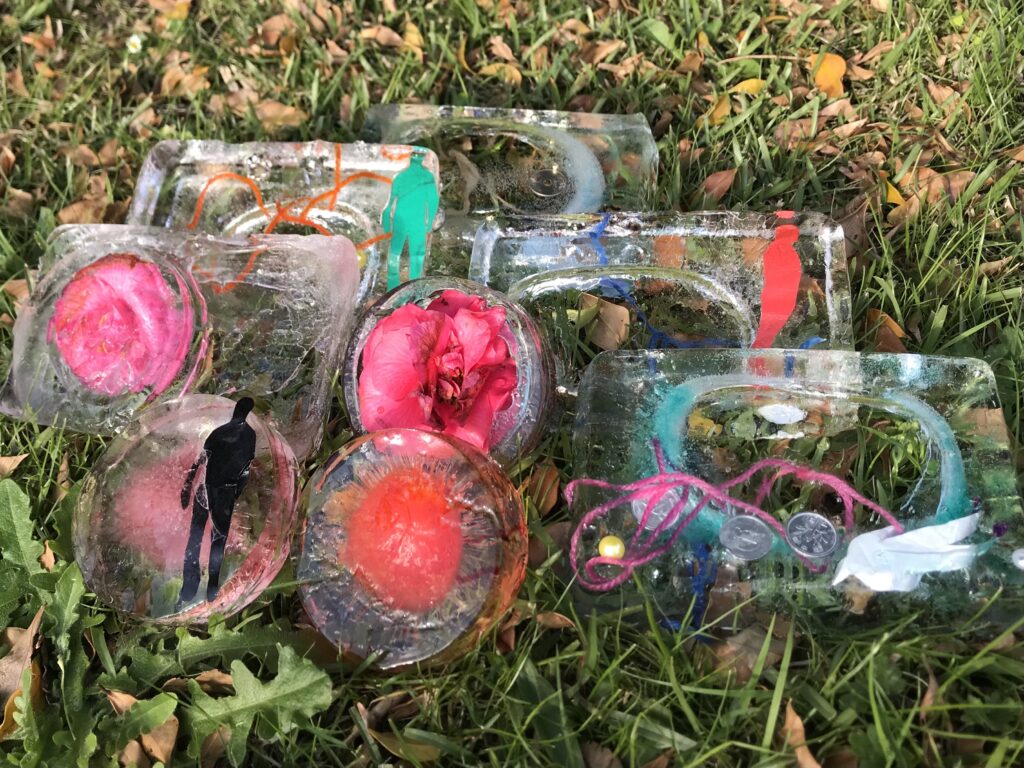
4:00 pm 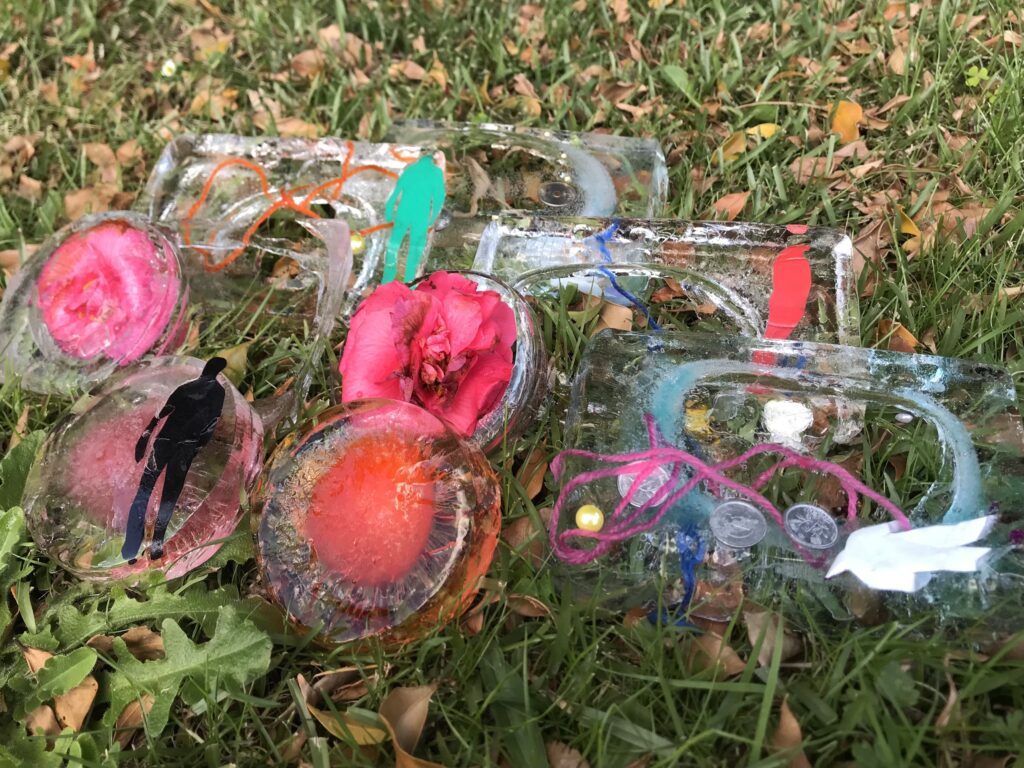
4:30 pm 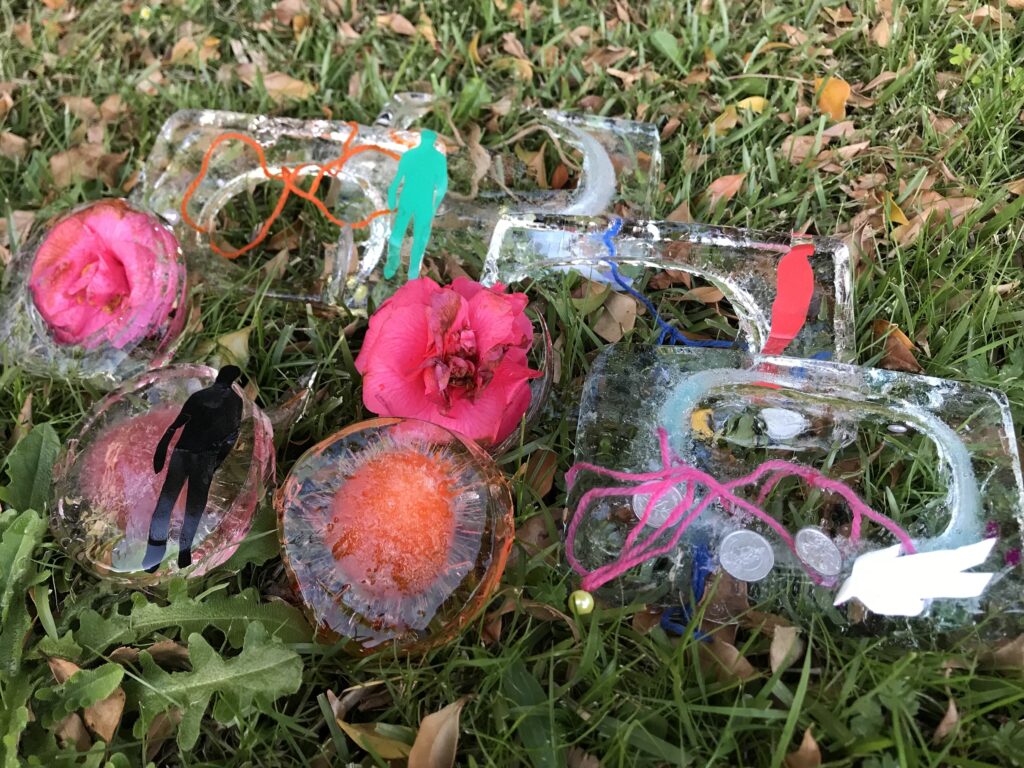
5:00 pm 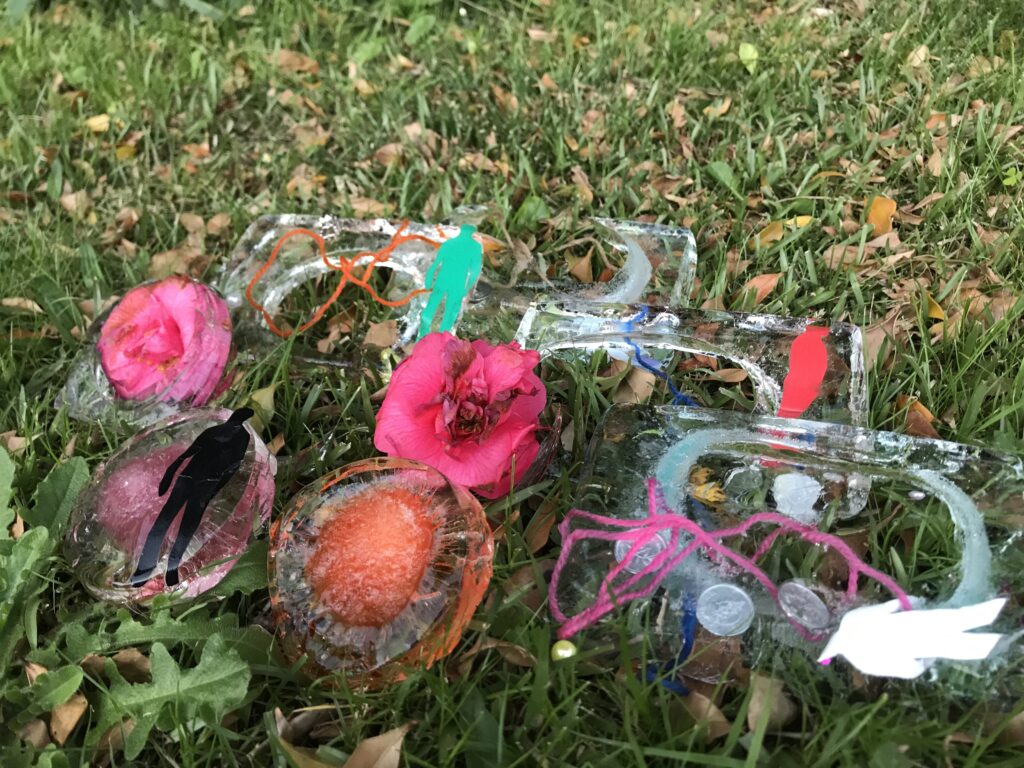
5:30 pm 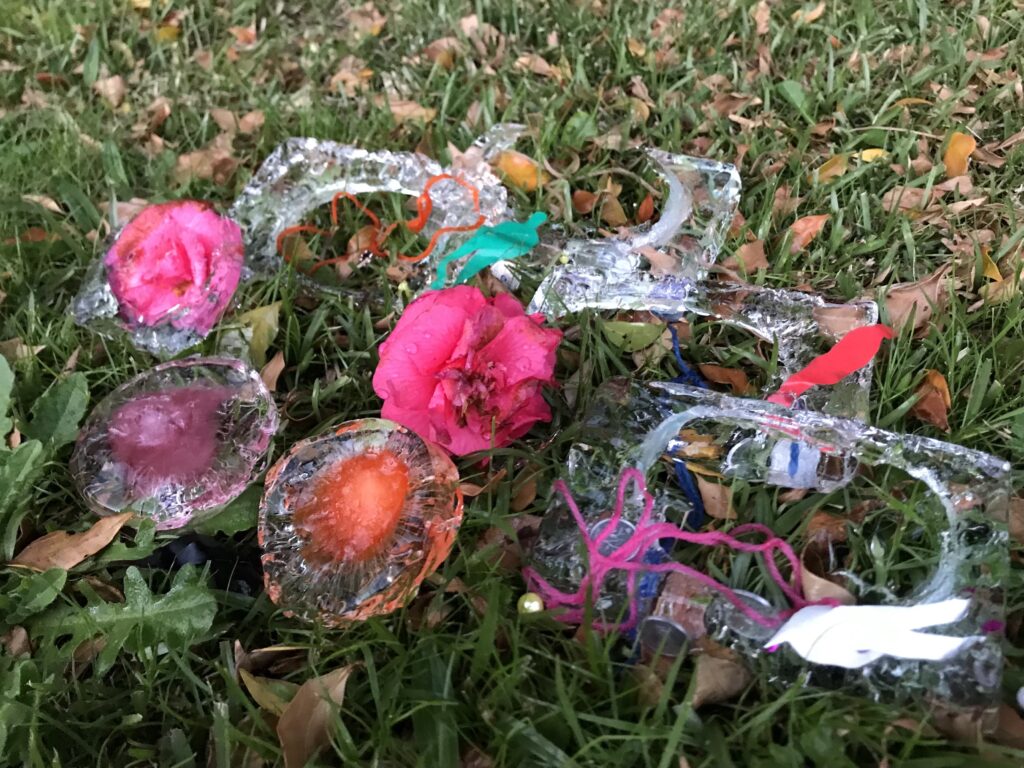
6:00 pm 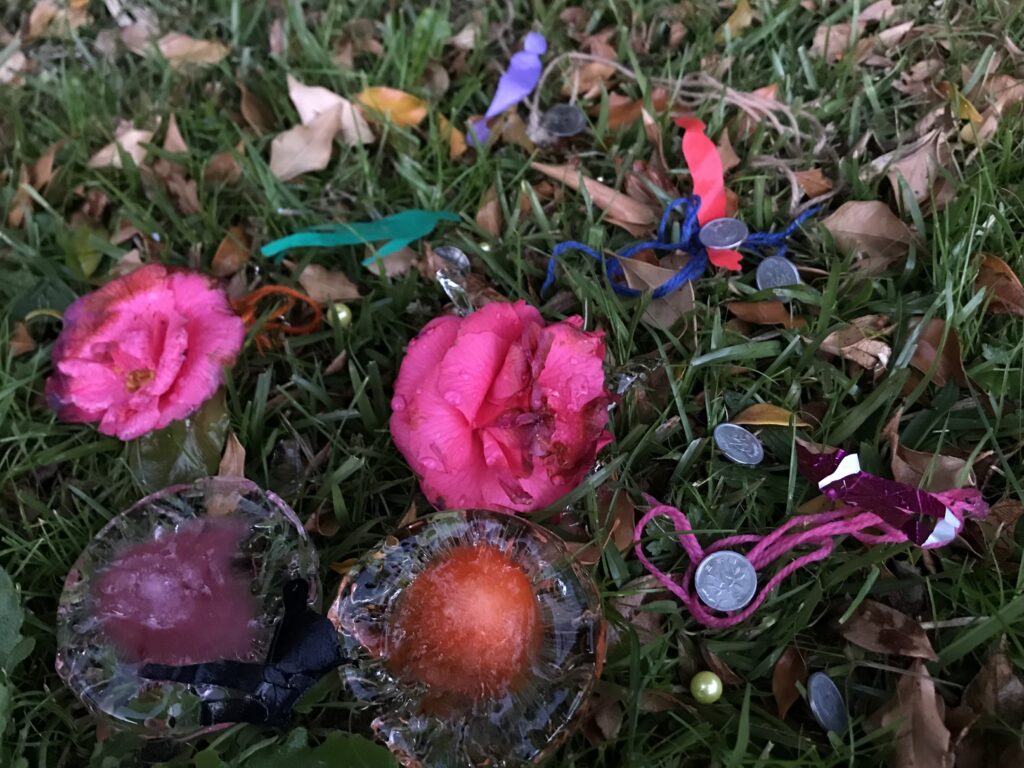
7:00 pm

